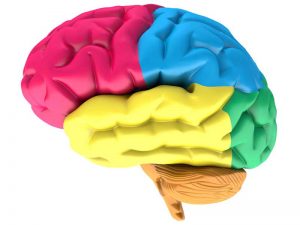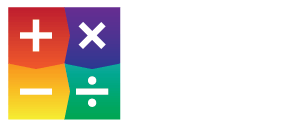The Missing Link to Math Fact Fluency
Does your school have a missing link?
Most schools miss the second step of math fact fluency…
Multi-Sensory Memorization
When all 3 steps are used together, test scores and response times improve significantly.
Step 1:
Cognitive Computation
This is the introductory step where teachers use manipulatives, games, activities, strategies and more to engage learners in arithmetic concepts including math facts.
Step 2:
Multi-Sensory Memorization
The use of visual, auditory and tactile cues engages all parts of the brain. Multi-sensory memorization prepares learners to store and recall math facts faster and easier.
Step 3:
Retrieve and Release
The retrieve and release step promotes the rapid recall of known facts. Practice that is targeted, distributed, and meaningful to the learner improves measurable outcomes.
Why Multi-Sensory Memorization Works
The cerebrum of the brain is divided into four lobes: frontal, occipital, temporal, and parietal.

Frontal Lobe
Mathematical problem solving is processed in the frontal lobe using processing memory. This memory is limited and easily consumed, especially in early learners.
Temporal Lobe
The temporal lobe is responsible for processing auditory information such as sounds and speech allowing comprehension of spoken words.
Parietal Lobe
The parietal lobe manages the input from all the senses and processes touch. It assesses numerical relationships and the size, shape, orientation in space. It processes language and coordinates attention.
Occipital Lobe
All visual information collected from the eyes is processed in the occipital lobe. This part of the brain processes visual input such as colors, shapes, size, dimensions, faces, written words, and objects.
Download our FREE ebook to learn more about multi-sensory teaching methods.
Multi-Sensory Memorization of math facts appeals to the occipital, temporal, and parietal lobes which act as sentinels to filter distractors and reduce cognitive load.
Reducing cognitive load on the frontal lobe is necessary for success in learning high rigor mathematics.
How Does Multi-Sensory Memorization Improve Learning and Recall?
Once memories are stored through sensory processing, they are easily retrieved through sensory recall using visual, auditory, and tactile cues. We call this the see, hear, say and write method.
See Method
Viewing the fact display for a period of time equal to learner maturation, prompts the brain to capture and store images in the occipital lobe as visual cues.
Hear Method
Hearing the fact read out loud by a trusted source appeals to the temporal lobe. Stored fact statements are recalled to the frontal lobe via auditory prompts.
Say Method
Verbalizing facts out loud requires unique mouth movement. The peculiar senquence is recalled by the brain appealing to the parietal lobe serving as a tactile cue.
Write Method
Writing facts engages all sensory responses. The frontal lobe sends out simultaneous appeals and preferred learning styles drive early sensory responses.
It is only when all the senses are used that the facts are retrieved based upon the individual’s preferred strategies, abilities, and learning styles.
Math Facts Matter applies today’s brain research to make the see, hear, say, and write method current for today’s classroom.
